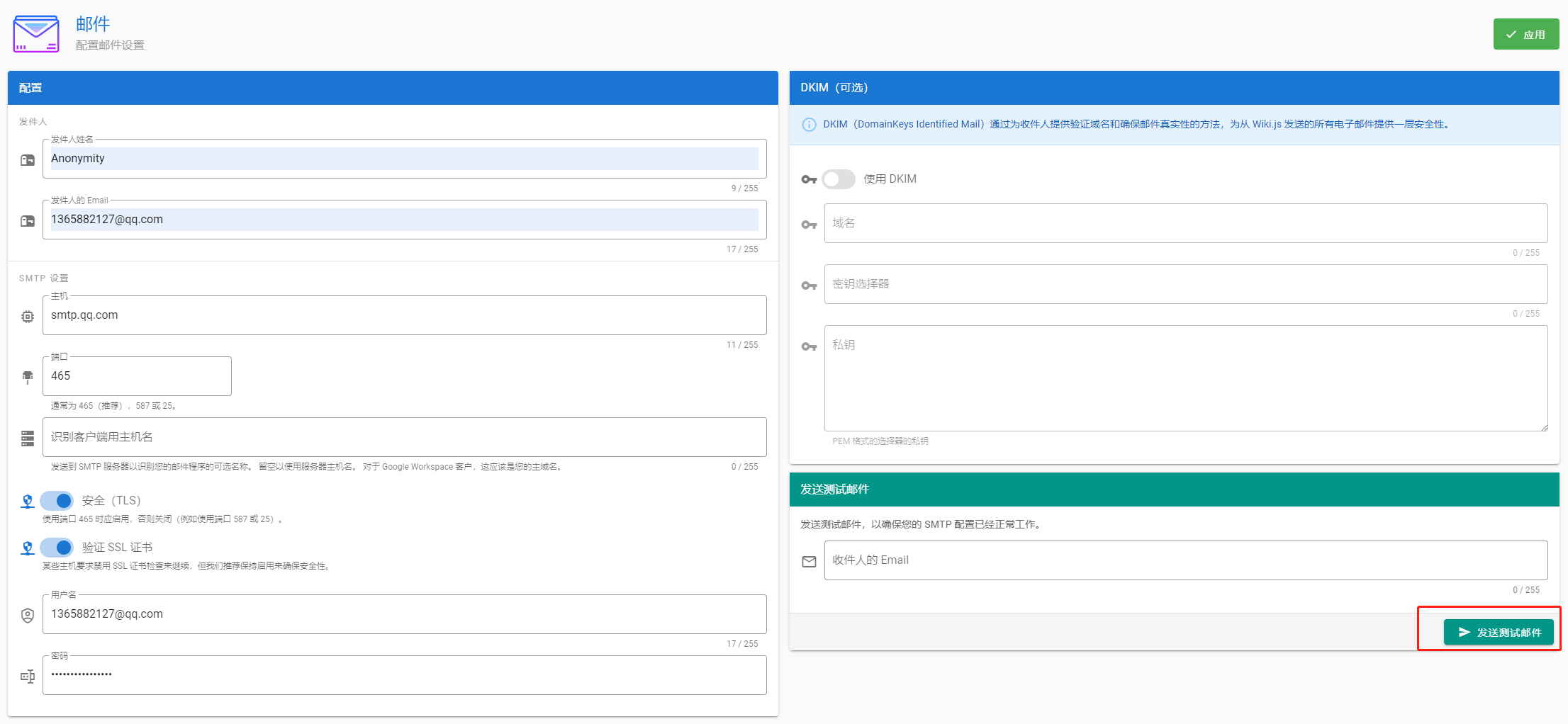目录
步骤1:准备三台服务器
步骤2:下载KubeKey
步骤3:创建集群
1. 创建示例配置文件
2. 编辑配置文件
3. 使用配置文件创建集群
4. 验证安装
步骤1:准备三台服务器
- 4c8g (master)
- 8c16g * 2 (worker)
- centos7.9
- 内网互通
- 每个机器有自己域名
- 防火墙开放30000~32767端口
| 主机 IP | 主机名 | 角色 |
|---|---|---|
| 192.168.0.2 | control plane | control plane, etcd |
| 192.168.0.3 | node1 | worker |
| 192.168.0.4 | node2 | worker |
#修改主机名字
hostnamectl set-hostname 主机IP步骤2:下载KubeKey(master节点)
先执行以下命令以确保您从正确的区域下载 KubeKey。
export KKZONE=cn
执行以下命令下载 KubeKey:
curl -sfL https://get-kk.kubesphere.io | VERSION=v3.0.2 sh -
为 kk 添加可执行权限
chmod +x kk步骤3:创建集群(master节点)
1. 创建示例配置文件
命令如下
./kk create config [--with-kubernetes version] [--with-kubesphere version] [(-f | --file) path]
./kk create config --with-kubernetes v1.20.4 --with-kubesphere v3.1.12. 编辑配置文件
将创建默认文件 config-sample.yaml。编辑文件,以下是多节点集群(具有一个主节点)配置文件的示例。
spec:
hosts:
- {name: master, address: 192.168.0.2, internalAddress: 192.168.0.2, user: ubuntu, password: Testing123}
- {name: node1, address: 192.168.0.3, internalAddress: 192.168.0.3, user: ubuntu, password: Testing123}
- {name: node2, address: 192.168.0.4, internalAddress: 192.168.0.4, user: ubuntu, password: Testing123}
roleGroups:
etcd:
- master
control-plane:
- master
worker:
- node1
- node2
controlPlaneEndpoint:
domain: lb.kubesphere.local
address: ""
port: 6443
我自己的修改后的:
apiVersion: kubekey.kubesphere.io/v1alpha2
kind: Cluster
metadata:
name: sample
spec:
hosts:
- {name: master, address: 172.31.0.2, internalAddress: 172.31.0.2, user: root, password: "W1234567@123"}
- {name: node1, address: 172.31.0.3, internalAddress: 172.31.0.3, user: root, password: "W1234567@123"}
- {name: node2, address: 172.31.0.4, internalAddress: 172.31.0.4, user: root, password: "W1234567q@123"}
roleGroups:
etcd:
- master
control-plane:
- master
worker:
- master
- node1
- node2
controlPlaneEndpoint:
## Internal loadbalancer for apiservers
# internalLoadbalancer: haproxy
domain: lb.kubesphere.local
address: ""
port: 6443
kubernetes:
version: v1.20.4
clusterName: cluster.local
autoRenewCerts: true
containerManager: docker
etcd:
type: kubekey
network:
plugin: calico
kubePodsCIDR: 10.233.64.0/18
kubeServiceCIDR: 10.233.0.0/18
## multus support. https://github.com/k8snetworkplumbingwg/multus-cni
multusCNI:
enabled: false
registry:
privateRegistry: ""
namespaceOverride: ""
registryMirrors: []
insecureRegistries: []
addons: []
---
apiVersion: installer.kubesphere.io/v1alpha1
kind: ClusterConfiguration
metadata:
name: ks-installer
namespace: kubesphere-system
labels:
version: v3.1.1
spec:
persistence:
storageClass: ""
authentication:
jwtSecret: ""
zone: ""
local_registry: ""
etcd:
monitoring: false
endpointIps: localhost
port: 2379
tlsEnable: true
common:
redis:
enabled: false
redisVolumSize: 2Gi
openldap:
enabled: false
openldapVolumeSize: 2Gi
minioVolumeSize: 20Gi
monitoring:
endpoint: http://prometheus-operated.kubesphere-monitoring-system.svc:9090
es:
elasticsearchMasterVolumeSize: 4Gi
elasticsearchDataVolumeSize: 20Gi
logMaxAge: 7
elkPrefix: logstash
basicAuth:
enabled: false
username: ""
password: ""
externalElasticsearchUrl: ""
externalElasticsearchPort: ""
console:
enableMultiLogin: true
port: 30880
alerting:
enabled: false
# thanosruler:
# replicas: 1
# resources: {}
auditing:
enabled: false
devops:
enabled: false
jenkinsMemoryLim: 2Gi
jenkinsMemoryReq: 1500Mi
jenkinsVolumeSize: 8Gi
jenkinsJavaOpts_Xms: 512m
jenkinsJavaOpts_Xmx: 512m
jenkinsJavaOpts_MaxRAM: 2g
events:
enabled: false
ruler:
enabled: true
replicas: 2
logging:
enabled: false
logsidecar:
enabled: true
replicas: 2
metrics_server:
enabled: false
monitoring:
storageClass: ""
prometheusMemoryRequest: 400Mi
prometheusVolumeSize: 20Gi
multicluster:
clusterRole: none
network:
networkpolicy:
enabled: false
ippool:
type: none
topology:
type: none
openpitrix:
store:
enabled: false
servicemesh:
enabled: false
kubeedge:
enabled: false
cloudCore:
nodeSelector: {"node-role.kubernetes.io/worker": ""}
tolerations: []
cloudhubPort: "10000"
cloudhubQuicPort: "10001"
cloudhubHttpsPort: "10002"
cloudstreamPort: "10003"
tunnelPort: "10004"
cloudHub:
advertiseAddress:
- ""
nodeLimit: "100"
service:
cloudhubNodePort: "30000"
cloudhubQuicNodePort: "30001"
cloudhubHttpsNodePort: "30002"
cloudstreamNodePort: "30003"
tunnelNodePort: "30004"
edgeWatcher:
nodeSelector: {"node-role.kubernetes.io/worker": ""}
tolerations: []
edgeWatcherAgent:
nodeSelector: {"node-role.kubernetes.io/worker": ""}
tolerations: []
3. 使用配置文件创建集群
./kk create cluster -f config-sample.yaml
我在这里提示有其他的需要安装下图:
22:33:18 CST [ConfirmModule] Display confirmation form
+--------+------+------+---------+----------+-------+-------+---------+-----------+--------+--------+------------+------------+-------------+------------------+--------------+
| name | sudo | curl | openssl | ebtables | socat | ipset | ipvsadm | conntrack | chrony | docker | containerd | nfs client | ceph client | glusterfs client | time |
+--------+------+------+---------+----------+-------+-------+---------+-----------+--------+--------+------------+------------+-------------+------------------+--------------+
| master | y | y | y | | | | | | y | | | | | | CST 22:33:18 |
| node1 | y | y | y | | | | | | y | | | | | | CST 22:33:18 |
| node2 | y | y | y | | | | | | y | | | | | | CST 22:33:18 |
+--------+------+------+---------+----------+-------+-------+---------+-----------+--------+--------+------------+------------+-------------+------------------+--------------+
22:33:18 CST [ERRO] master: conntrack is required.
22:33:18 CST [ERRO] master: socat is required.
22:33:18 CST [ERRO] node1: conntrack is required.
22:33:18 CST [ERRO] node1: socat is required.
22:33:18 CST [ERRO] node2: conntrack is required.
22:33:18 CST [ERRO] node2: socat is required然后根据缺少每个节点安装好
yum install -y conntrack && yum install -y socat
然后继续下面这个命令安装:
./kk create cluster -f config-sample.yaml整个安装过程可能需要 10 到 20 分钟,具体取决于您的计算机和网络环境
4. 验证安装
安装完成后,您会看到如下内容
#####################################################
### Welcome to KubeSphere! ###
#####################################################
Console: http://192.168.0.2:30880
Account: admin
Password: P@88w0rd
NOTES:
1. After you log into the console, please check the
monitoring status of service components in
the "Cluster Management". If any service is not
ready, please wait patiently until all components
are up and running.
2. Please change the default password after login.
#####################################################
https://kubesphere.io 20xx-xx-xx xx:xx:xx
#####################################################
现在,您可以通过 <NodeIP:30880 使用默认帐户和密码 (admin/P@88w0rd) 访问 KubeSphere 的 Web 控制台。




















